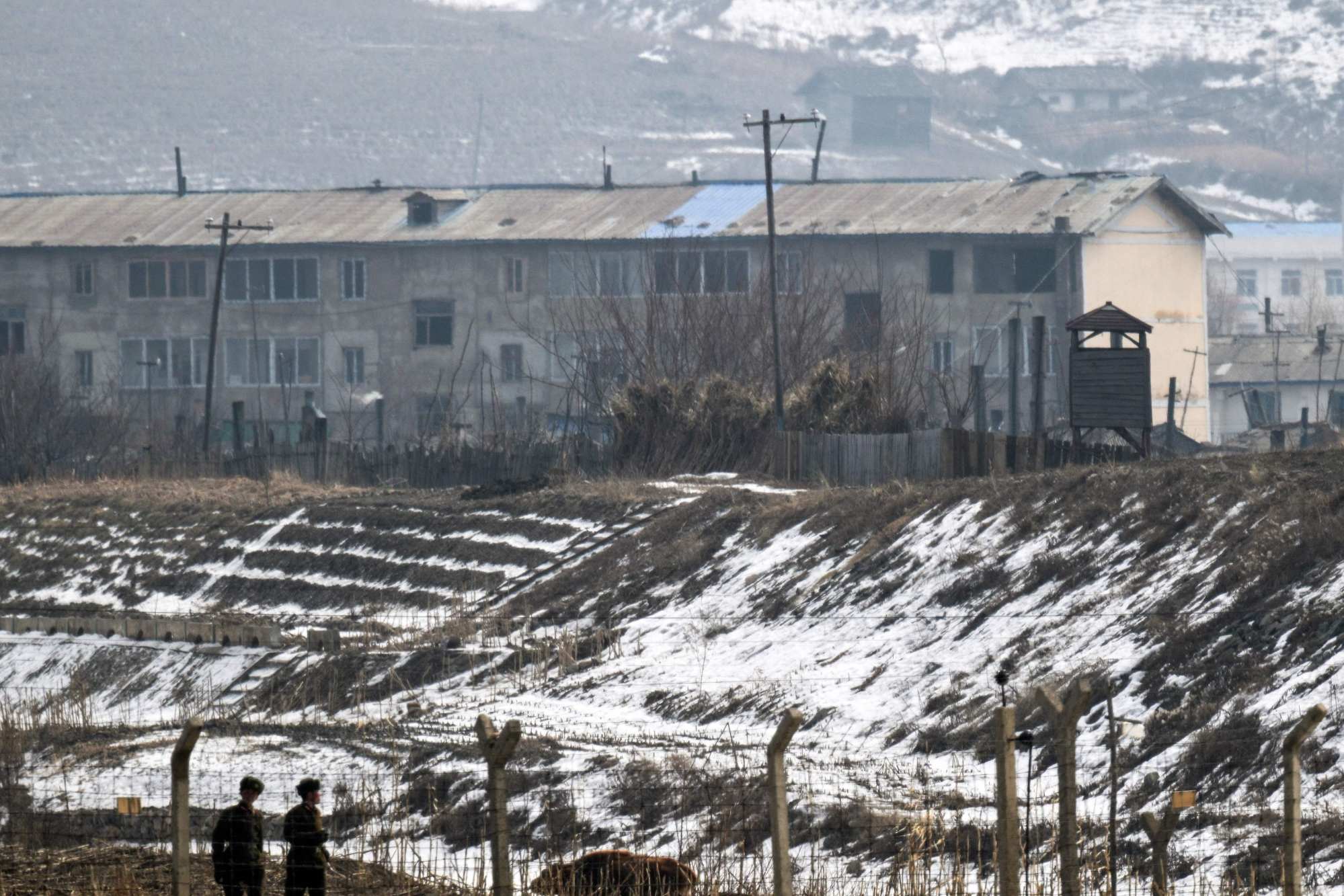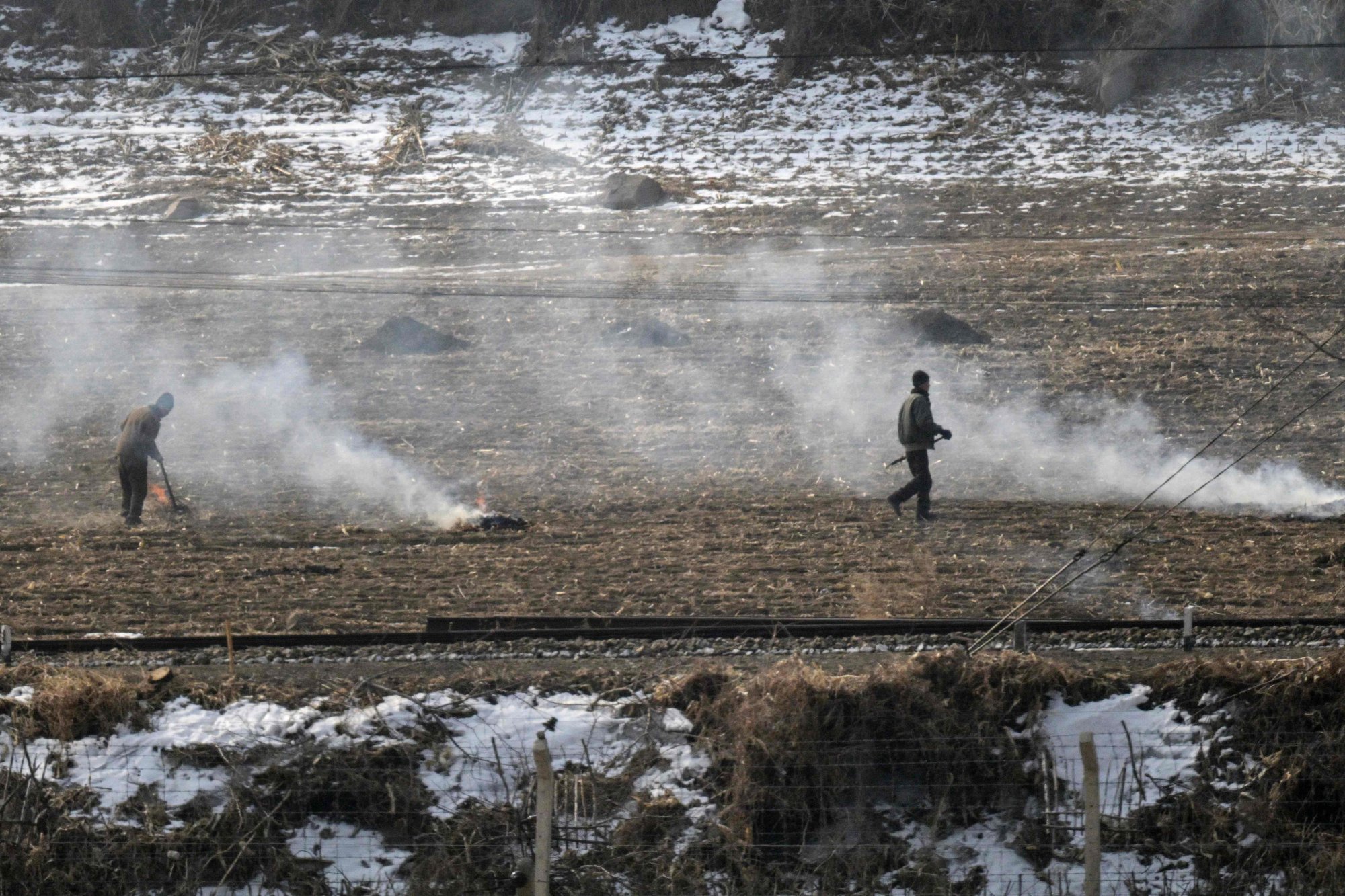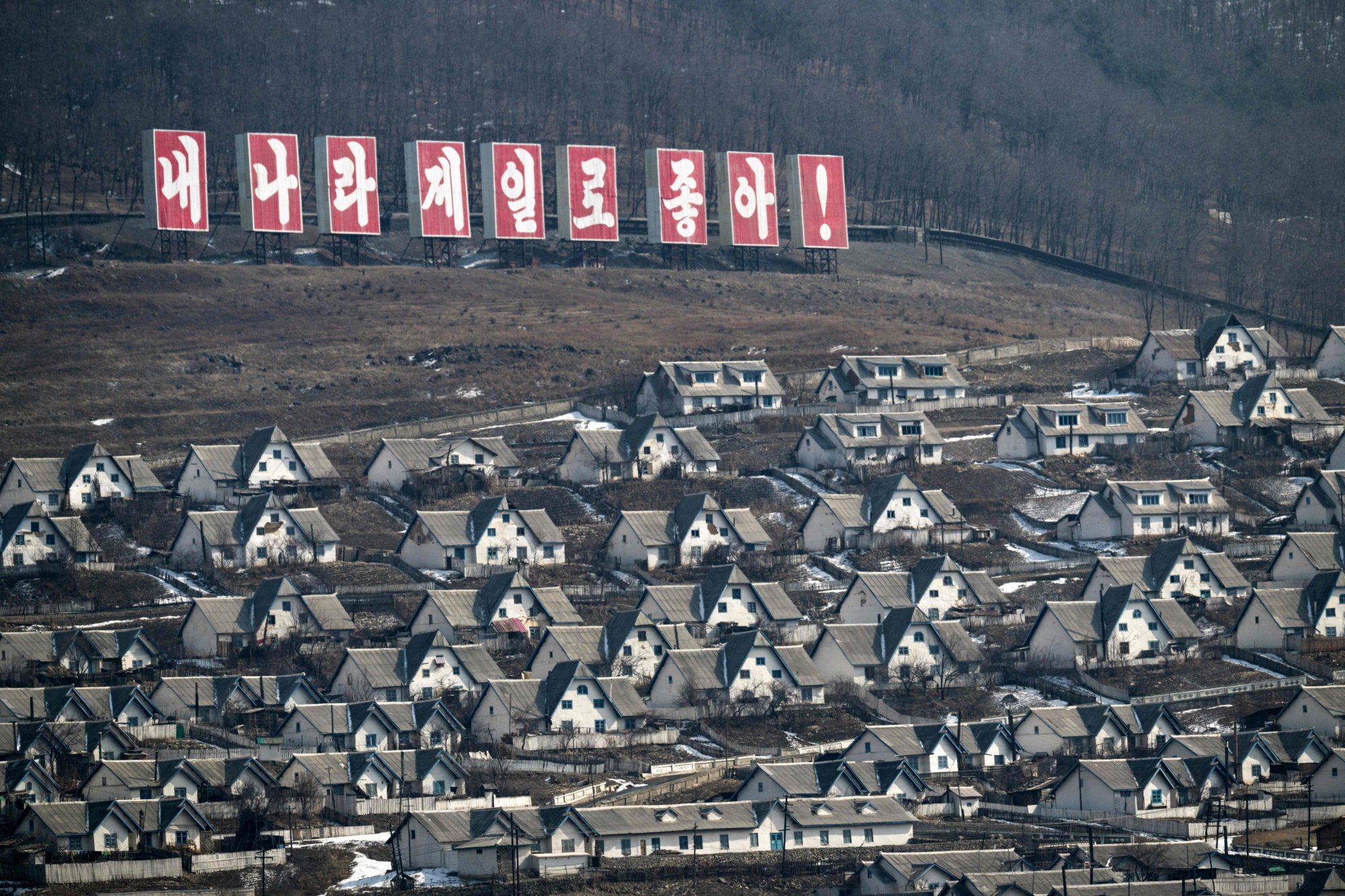Between rusting factories and peeling housing blocks were glimpses of everyday life, as North Koreans eked out their living by hauling timber and burning crop fields. In one town, two goods trucks waited patiently on a bridge into China – a sign of resumption in the cross-border trade crucial to Pyongyang’s moribund economy.

Beyond the eagle-eyed guards, portraits of the ruling Kim dynasty watch over the populace, while monumental propaganda banners laud their socialist ideology. One slogan, written in huge red and white letters on a hillside, simply states: “Our country is the best!”
North Korea was founded in 1948 under Kim Il-sung as the Democratic People’s Republic of Korea (DPRK), inspired by strict Marxist-Leninist principles.

North Korea’s self-imposed isolation is largely due to its guiding principle of “juche” – or “self-reliance” – the idea that it should be able to function completely independently and remain separate from the rest of the world.

In practice, this has achieved little other than to stifle the country’s economy and trade, and many of its citizens face high poverty levels and severe food shortages. The CIA says North Korea “remains one of the world’s most isolated and one of Asia’s poorest.”
North Korea’s chronic food shortages are believed to have grown more acute during the pandemic, and campaigners say authorities have strengthened border defences to prevent escapes to its vast, wealthy neighbour.

That number surged last year amid what the unification ministry in Seoul called “worsening conditions in North Korea”.
Pardo’s photos, which show North Korean soldiers gazing across an icy river towards China and occasionally descending from looming watchtowers to prowl border paths behind barbed wire and sharpened sticks, present a unique look into life in one of the world’s most secretive communist states.

